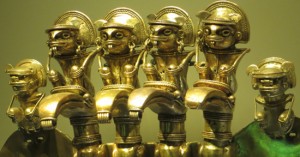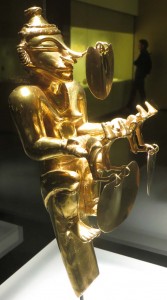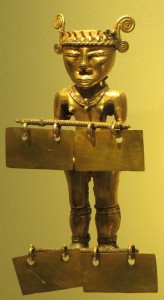 Bogota, Colombia is a city of 14 million people, and frankly, doesn’t have much going for it, in terms of the international traveler. It’s tough to get around during rush hour (try to find a taxi), so you really do need to head back to your hotel around 3 pm. Some of the downtown areas near the old city are “no-go” areas. In fact, the city it reminds us of, here at WoWasis, is Oakland, California. Overall, not much to see, pretty run down, and just plain dangerous in areas adjacent to tourist-related spots. On top of that, the city outlaws liquor sales when the national team wins an important match. Not a problem for locals, who stock up beforehand, but awful for visitors looking for a beer or a glass of wine, and a real punch in the gut to the tourism industry, which is in recovery from decades of “off the list” edicts from other countries.
Bogota, Colombia is a city of 14 million people, and frankly, doesn’t have much going for it, in terms of the international traveler. It’s tough to get around during rush hour (try to find a taxi), so you really do need to head back to your hotel around 3 pm. Some of the downtown areas near the old city are “no-go” areas. In fact, the city it reminds us of, here at WoWasis, is Oakland, California. Overall, not much to see, pretty run down, and just plain dangerous in areas adjacent to tourist-related spots. On top of that, the city outlaws liquor sales when the national team wins an important match. Not a problem for locals, who stock up beforehand, but awful for visitors looking for a beer or a glass of wine, and a real punch in the gut to the tourism industry, which is in recovery from decades of “off the list” edicts from other countries.
 That said (we really had to get it off our chest, Bogota was low on the fun factor), one of South America’s finest and most unique museums is there, and it’s good enough to warrant a side-trip for a day to see it. It’s the remarkable Museo Del Oro, the Gold Museum, three floors containing some of the greatest Pre-Columbian gold pieces on display in South America. It’s not just the artifacts, either. The curatorial aspect of the museum is critical, and tells the story of gold in the Andes in four distinct stages: The Working of Metals, People and Gold in Pre-Historic Colombia, Cosmology and Symbolism, and The Offering. Each stage is its own display area, containing artifacts specific to the subject.
That said (we really had to get it off our chest, Bogota was low on the fun factor), one of South America’s finest and most unique museums is there, and it’s good enough to warrant a side-trip for a day to see it. It’s the remarkable Museo Del Oro, the Gold Museum, three floors containing some of the greatest Pre-Columbian gold pieces on display in South America. It’s not just the artifacts, either. The curatorial aspect of the museum is critical, and tells the story of gold in the Andes in four distinct stages: The Working of Metals, People and Gold in Pre-Historic Colombia, Cosmology and Symbolism, and The Offering. Each stage is its own display area, containing artifacts specific to the subject.
It’s not easy for the layperson to put all these beautiful and priceless gold objects in perspective. Most international visitors do not live, we’d guess, in countries with a Pre-Columbian history. They have a difficulty remembering the names of the groups and areas that made these objects. We’ve never liked audio guides, as we find they tend to get in the way of the wonder of making one’s own discoveries, not to mention the scads of earphone-wearing attendees that tend to clot up in front of many of the best pieces in any museum collection. The Museo Del Oro made the task of figuring it out less onerous by grouping the objects into these four thematic areas.
There is a guide in book form that’s available for purchase, one of the best we’ve ever seen. At 222 pages and replete with color photographs, it’s an essential take-home, a handsome historical fact book that allows the visitor to luxuriate in seeing the collection without having to read every damn explanation. At about $13 USD, it’s a bargain.
 Perhaps best of all, from our perspective, is that the museum encourages the visitor to take his or her own photographs (without flash) in order to remember his or her own favorite pieces. We’ve never liked museums that ban photography as a means of securing revenue through its overpriced catalogue. Patrons have already paid for admission, and they deserve to preserve their own memories of the collection. Come here, and you can take your own photos, then buy the guidebook, go back to your hotel and read about it all, and we’re betting that eventually you’ll come back for more.
Perhaps best of all, from our perspective, is that the museum encourages the visitor to take his or her own photographs (without flash) in order to remember his or her own favorite pieces. We’ve never liked museums that ban photography as a means of securing revenue through its overpriced catalogue. Patrons have already paid for admission, and they deserve to preserve their own memories of the collection. Come here, and you can take your own photos, then buy the guidebook, go back to your hotel and read about it all, and we’re betting that eventually you’ll come back for more.
In a large capital city sadly lacking in major visitor attractions, the Museo Del Oro stands out as one of South America’s finest museums, making a trip to this city worthwhile, even when the local football team wins and you can’t get a drink to save your soul.
Museo Del Oro
Carrera 6 15-88
Bogotá, Colombia
www.banrep.gov.co/museo
Tel: (571) 284-7450
Leave a Reply